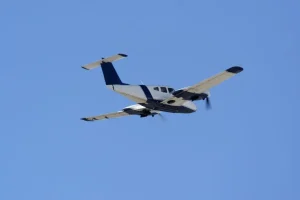What are the FAA Requirements for Commercial Pilot Training?
Earning your Commercial Pilot Certificate is the milestone that transforms a passion for flying into a professional career. At Paragon Flight Training, we guide students from all walks of life through every FAA requirement and stage of commercial pilot training. Here’s what you need to know to get started, and how we can help you reach your goals as effectively as possible.
Eligibility Requirements for Commercial Pilots

Before beginning your commercial training, you must meet several baseline FAA requirements:
- You must be at least 18 years old.
- You must be able to read, speak, write, and understand English.
- You must already hold a Private Pilot Certificate.
- You must pass a Second-Class FAA Medical Exam.
These prerequisites ensure that every commercial pilot candidate starts with a solid foundation, both in knowledge and in health, to handle the demands of professional flying.
Choose Your Path: Part 61 vs. Part 141
The FAA offers two primary routes to your Commercial Pilot Certificate: Part 61 and Part 141. At Paragon Flight, we are proud to provide both pathways.
Part 61 – Flexible & Self-Paced
Part 61 training is ideal for students who need flexibility. It allows you to complete your training on a schedule that fits around work, school, or family. The FAA requires a minimum of 250 total flight hours, including:
- 100 hours as pilot-in-command (PIC) — at least 50 in airplanes.
- 50 hours of cross-country time, with at least 10 in airplanes.
- 10 hours of instrument training.
- 5 hours of night flying, including at least 10 takeoffs and landings.
While Part 61 generally requires more total flight hours than Part 141, it’s an excellent fit for students who want to learn at their own pace.
Part 141 – Structured & Accelerated
Part 141 programs follow a highly structured, FAA-approved syllabus. Because of this standardized approach, the total flight hour requirement drops to 190 hours, making it the fastest path for many career-focused students.
At Paragon, our Part 141 curriculum is perfect for those who want a clearly defined training schedule, faster completion time, and the added benefits of training at an FAA-approved school. This is especially appealing to career changers eager to move into aviation as quickly as possible.
The Paragon Promise
Earning your Commercial Pilot Certificate isn’t just about meeting FAA minimums. It’s about building confidence, decision-making skills, and technical mastery to thrive in a professional setting.
When you train with Paragon, you benefit from:
- Award-Winning Instructors: Learn from highly experienced pilots with real-world airline, corporate, and military backgrounds.
- Next-Generation Aircraft & Simulators: Train on Piper P100i, Piper Seminole, Cessna 172S, and Cirrus SR20 G6 aircraft equipped with Garmin G1000 avionics and industry-leading flight simulators.
- Financing Assistance: Guidance on government-backed loans, aviation scholarships, and private financing solutions.
- Student-Focused Support: From enrollment to checkride, you’ll have mentorship, progress tracking, and one-on-one guidance every step of the way.
- Year-Round Flying Conditions: With more than 300 flyable days annually, Paragon students spend less time grounded by weather and more time building flight hours.
Takeoff with Paragon Flight
Whether you’re starting from scratch or transitioning from another career, Paragon’s FAA Part 61 and Part 141 Airline & Commercial Pilot programs give you the knowledge, skills, and experience to meet—and exceed—FAA commercial pilot requirements.
Ready to take the first step? Contact Paragon Flight at (239) 747-0056 or visit us online to learn more about our commercial pilot training programs and schedule your consultation.
